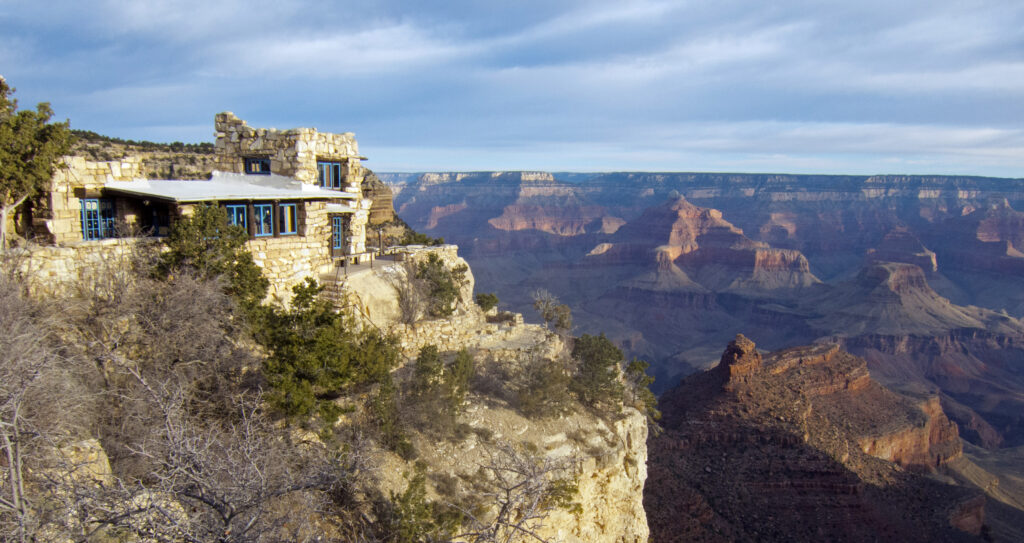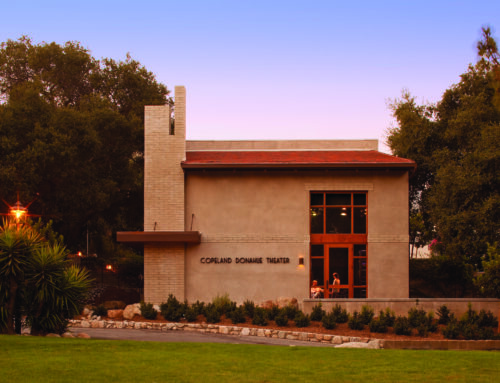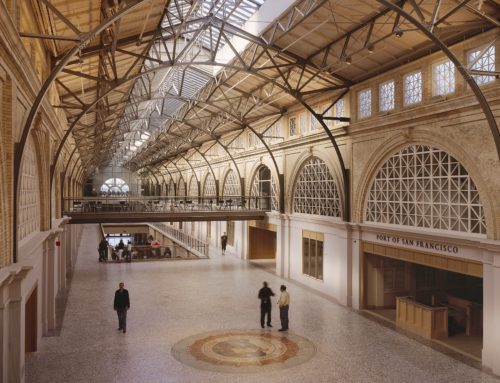
Lookout Studio. NPS Photo by Michael Quinn.
Reflections on the intersection of historic preservation and environmentalism in Page & Turnbull’s vast portfolio of work in the majestic Grand Canyon.
When Earth Day took place on April 22, 1970, millions of Americans took to the streets to demonstrate for a healthier planet and a sustainable environment. An eco-political consciousness emerged as people from all backgrounds and party affiliations united for a cause to preserve the natural home we share. These values were in direct alignment with those in the historic preservation movement, such as Charles Page, a founding principal of Page & Turnbull. Page would work with the San Francisco Heritage to create a comprehensive preservation strategy in the 70s to save important buildings in the city, and slow the construction boom.
Page & Turnbull carries on that unique combination of environmental sustainability and historic preservation in its work for a multitude of public and private sector clients, including the National Park Service (NPS) and one of the United States most important cultural landmarks, the Grand Canyon.
Our firm has worked with NPS as well as Xanterra and Forever Resorts, large park concessions management companies, on over 40 significant structures within the Grand Canyon. Here are some key projects:
The Desert View Watchtower, Hermit’s Rest and Lookout Studio
Completed in 1914, the Desert View Watchtower emulates a traditional Hopi design and sits at the edge of the Canyon. Listed as a National Historic Landmark, it consists of a bolted steel frame with concrete slab floors and native stone infill walls. Because of its position at the edge of a cliff, exterior repairs and improvements to the building proved challenging. Our team employed laser- scanning techniques to thoroughly document the conditions to identify cracks, shifts in stone placement, and points of water intrusion for the restoration and repair of the building.
Lookout Studio and Hermit’s Rest were designed and built at the same time in 1914. They share unique rustic features and were designed to be integrated into the natural setting. Page & Turnbull restored both buildings over a series of phases to integrate more sustainable features, such as energy efficient lighting and mechanical systems, as well as improved accessibility.
The North Rim Lodge and Cabins
The Grand Canyon Lodge with rustic log cabins, designed by renowned park architect Gilbert Stanley Underwood in 1928, are part of a National Historic Landmark district. The design and construction for the renovation was on an extremely fast paced schedule. Multiple interior layouts, including a conditions survey, were reviewed and working drawings developed for nine separate unit designs within a month’s time. Extreme weather conditions meant that all construction work took place only when the roads were open in the Spring to October. Page & Turnbull worked on-site with the contractor, concessionaire, and NPS to finally restore the historic integrity of the site and buildings.
Cultural Resources Protection Plan
One of the most important projects Page & Turnbull worked on with NPS and Xanterra was to produce a cultural resources protection plan for all historic buildings and site features within their leasehold. The primary effort involved identifying, collecting, and correcting all historic resources and site features information in a single inventory, cataloguing all available resource assessments or documentation, organizing all existing standard maintenance protocols for the park. It also involved surveying all resources current conditions and writing a comprehensive protection plan for resources. The huge undertaking provides a roadmap for preserving the history of this iconic national park.
Preserving our historic natural environment for the future
On this Earth Day, we reflect on the importance of historic preservation for the sustainability of our environment. We envision continuing this work because it matters; because these places are not only culturally significant, they are important ecological heirlooms that should be treasured for future generations. They anchor our communities and preserve our cultural fabric. National treasures like the Grand Canyon provide important lessons about who we are as a nation. We’ll always be proud of our part in preserving the beauty and history of the West.


